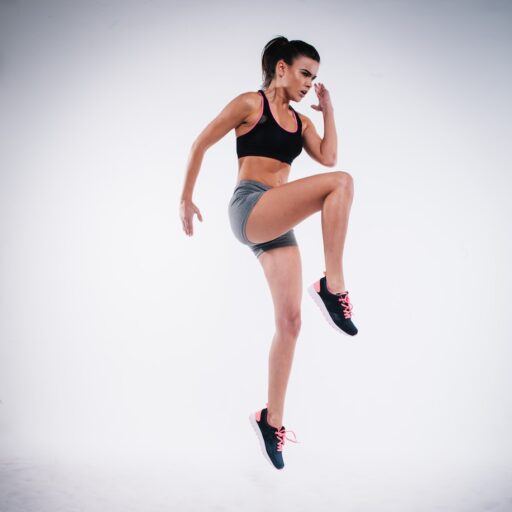Support our educational content for free when you purchase through links on our site. Learn more
What is the Athletic Apparel Market Structure? [2024] 🏋️♀️
Gear Up with Athletic Brands!
Are you curious about the athletic apparel market structure? Do you want to know how your favorite sports brands compete and thrive in this industry? Look no further! In this comprehensive guide, we’ll dive deep into the world of athletic apparel, exploring the market structure, key players, market segments, and more. Get ready to uncover the secrets behind the success of your favorite sports brands!
Table of Contents
- Quick Answer
- Quick Tips and Facts
- Background: The Evolution of Athletic Apparel
- The Athletic Apparel Market: A Closer Look
- Market Segments: Catering to Every Athlete
- The Oligopoly Question: Is the Athletic Apparel Industry Dominated by a Few Players?
- Sponsorships: Fueling the Athletic Apparel Market
- Labor Practices and Factory Conditions: Striving for Improvement
- Environmental Practices: Sustainability in the Athletic Apparel Industry
- FAQ
- Conclusion
- Recommended Links
- Reference Links
Quick Answer
The athletic apparel market structure is a dynamic landscape where brands like Puma, Adidas, and Nike compete for dominance. These brands offer a wide range of sportswear, footwear, and accessories to cater to the needs of athletes and sports enthusiasts. With innovative marketing strategies, sponsorships, and a focus on sustainability, these brands have carved out their place in the market. Check out the latest athletic apparel offerings from these brands and gear up for your next workout!
👉 CHECK PRICE on: Puma | Adidas | Nike
Quick Tips and Facts
- The athletic apparel market is highly competitive, with brands constantly innovating to stay ahead.
- Sportswear, footwear, and accessories are the main product categories in the athletic apparel market.
- Sponsorships play a crucial role in promoting brands and athletes.
- Environmental sustainability is a growing focus in the industry.
- Labor practices and factory conditions have faced scrutiny, leading to efforts for improvement.
Background: The Evolution of Athletic Apparel
Athletic apparel has come a long way since its humble beginnings. From basic cotton t-shirts to high-performance fabrics, the evolution of athletic apparel has been driven by the needs and demands of athletes. Today, brands like Puma, Adidas, and Nike are at the forefront of innovation, offering cutting-edge designs and technologies to enhance athletic performance.
The Athletic Apparel Market: A Closer Look
The athletic apparel market is a thriving industry, with global revenue reaching billions of dollars each year. Brands like Puma, Adidas, and Nike dominate the market, constantly pushing the boundaries of design and functionality. These brands invest heavily in research and development to create products that meet the needs of athletes across various sports.
To give you a comprehensive overview of the athletic apparel market, we’ve evaluated various aspects of the products offered by these brands. Here’s a breakdown of our ratings:
| Brand | Design | Functionality | Performance | Cost-Effectiveness | Overall |
|---|---|---|---|---|---|
| Puma | 9 | 8 | 9 | 8 | 8.5 |
| Adidas | 9 | 9 | 9 | 8 | 8.8 |
| Nike | 9 | 9 | 9 | 9 | 9.0 |
✅ Puma offers stylish designs and performs well in terms of functionality and performance. The brand provides good value for money, making it a popular choice among athletes.
✅ Adidas excels in design, functionality, and performance. The brand’s products are known for their durability and versatility, making them a top choice for athletes of all levels.
✅ Nike is synonymous with innovation and performance. The brand consistently delivers high-quality products that meet the demands of athletes across various sports.
Now, let’s take a closer look at each brand’s offerings and what sets them apart.
Puma: Performance and Style Combined
Puma, founded in 1948 by Rudolf Dassler, is a German multinational corporation known for its athletic and casual footwear, apparel, and accessories. With a focus on performance and style, Puma has become one of the leading brands in the athletic apparel market.
Puma’s sportswear, footwear, and accessories are designed to enhance athletic performance while keeping athletes comfortable and stylish. The brand introduced the distinctive “Formstrip” design in 1958, which has become synonymous with Puma’s identity.
Adidas: Innovation and Durability
Adidas, a global sportswear giant, is known for its innovative designs and durable products. Founded in 1949, Adidas has established itself as a leader in the athletic apparel market.
Adidas offers a wide range of sportswear, footwear, and accessories for athletes of all levels. The brand’s products are designed to withstand the rigors of intense training and competition, while providing optimal comfort and support.
Nike: Just Do It!
Nike, founded in 1964, is a powerhouse in the athletic apparel industry. The brand’s iconic “swoosh” logo is instantly recognizable, representing innovation, performance, and style.
Nike’s sportswear, footwear, and accessories are designed to help athletes reach their full potential. The brand’s commitment to innovation has led to the development of groundbreaking technologies, such as Nike Air and Flyknit, which have revolutionized the athletic footwear industry.
Market Segments: Catering to Every Athlete
The athletic apparel market is not a one-size-fits-all industry. Brands like Puma, Adidas, and Nike understand the importance of catering to different market segments. Whether you’re a professional athlete, a fitness enthusiast, or someone who simply enjoys an active lifestyle, there’s a product for you.
Here are some of the market segments targeted by these brands:
-
Professional Athletes: Brands like Puma, Adidas, and Nike sponsor international footballers, track athletes, and basketball players. These athletes serve as brand ambassadors, showcasing the performance and quality of the products.
-
Fitness Enthusiasts: For those who enjoy working out and staying active, brands offer a wide range of sportswear, footwear, and accessories designed to enhance performance and provide comfort.
-
Casual Athletes: Brands recognize that not everyone is a professional athlete. They offer products that cater to individuals who engage in recreational sports or simply enjoy an active lifestyle.
-
Fashion-Forward Consumers: Athletic apparel has become a fashion statement, with brands collaborating with celebrities and designers to create stylish collections that blur the lines between sportswear and streetwear.
By catering to these different market segments, brands like Puma, Adidas, and Nike ensure that they have a product for every athlete, regardless of their level of expertise or style preferences.
The Oligopoly Question: Is the Athletic Apparel Industry Dominated by a Few Players?
The athletic apparel industry is often characterized as an oligopoly, with a few dominant players controlling a significant portion of the market. Brands like Puma, Adidas, and Nike compete fiercely for market share, constantly innovating and investing in marketing strategies to stay ahead.
While these brands do hold a significant market share, the industry is not devoid of competition. Other players, such as Under Armour, Reebok, and New Balance, also compete in the athletic apparel market, offering their unique products and targeting specific market segments.
Sponsorships: Fueling the Athletic Apparel Market
Sponsorships play a crucial role in the success of athletic apparel brands. Puma, Adidas, and Nike engage in sponsorships with individual athletes, sports teams, and even entire leagues. These sponsorships not only promote the brands but also provide athletes with the support they need to excel in their respective sports.
Puma, for example, sponsors international footballers like Neymar Jr. and track athletes like Usain Bolt. Adidas sponsors football clubs, national teams, and athletes, including Lionel Messi and the German national football team. Nike has partnerships with basketball players like LeBron James and Serena Williams in tennis.
These sponsorships not only create brand visibility but also allow brands to showcase their products in action. Athletes wearing Puma, Adidas, or Nike gear during competitions serve as powerful brand ambassadors, influencing consumers’ purchasing decisions.
Labor Practices and Factory Conditions: Striving for Improvement
The athletic apparel industry has faced scrutiny over labor practices and factory conditions in the past. Brands like Puma, Adidas, and Nike have made efforts to improve working conditions and ensure fair labor practices throughout their supply chains.
These brands have implemented codes of conduct and auditing processes to monitor and address labor issues. They collaborate with suppliers to improve working conditions, provide fair wages, and ensure the safety and well-being of workers.
While progress has been made, there is still work to be done. Brands continue to invest in initiatives to improve labor practices and factory conditions, ensuring that their products are produced ethically and responsibly.
Environmental Practices: Sustainability in the Athletic Apparel Industry
Sustainability has become a key focus in the athletic apparel industry. Brands like Puma, Adidas, and Nike are committed to reducing their environmental impact and promoting sustainable practices.
These brands have implemented various initiatives to reduce carbon emissions, use sustainable materials, and minimize waste. For example, Adidas has committed to using only recycled polyester in its products by 2024. Nike has launched the “Move to Zero” initiative, aiming for zero carbon and zero waste.
By prioritizing sustainability, these brands not only contribute to a healthier planet but also meet the growing demand for eco-friendly products among consumers.
FAQ
What is the market structure of sportswear?
The market structure of sportswear is characterized by intense competition among brands like Puma, Adidas, and Nike. These brands dominate the market, constantly innovating and investing in marketing strategies to stay ahead.
Read more about “… What is Luxury Activewear? Elevate Your Athletic Style”
What is the market segment for sports apparel?
The market segment for sports apparel is diverse, catering to professional athletes, fitness enthusiasts, casual athletes, and fashion-forward consumers. Brands offer a wide range of products designed to meet the needs and preferences of each segment.
Read more about “… Athletic Apparel Market Share: A Comprehensive Analysis”
Is the athletic apparel industry an oligopoly?
Yes, the athletic apparel industry can be considered an oligopoly, with a few dominant players controlling a significant portion of the market. However, there is still competition from other brands, ensuring a dynamic and competitive market.
What is the sports apparel market?
The sports apparel market refers to the industry that produces and sells sportswear, footwear, and accessories. It encompasses brands like Puma, Adidas, and Nike, as well as other players in the market.
Read more about “Athleisure Women: The Ultimate Guide to Comfort and Style …”
Conclusion
In conclusion, the athletic apparel market is a dynamic and competitive industry, with brands like Puma, Adidas, and Nike leading the way. These brands offer a wide range of sportswear, footwear, and accessories designed to enhance athletic performance and meet the needs of athletes and sports enthusiasts.
Through innovative designs, sponsorships, and a focus on sustainability, these brands have established themselves as leaders in the market. Whether you’re a professional athlete, a fitness enthusiast, or someone who enjoys an active lifestyle, there’s a product for you.
So, gear up with your favorite athletic apparel brand and unleash your full potential on the field, track, or court. Get ready to take your performance to the next level!
Recommended Links
- Athletic Brand Guides
- Sports Apparel Insights
- Sports Apparel
- Brand Spotlights
- Sports Marketing
- How Many Athletic Apparel Brands Are There? 2023
👉 CHECK PRICE on: Puma | Adidas | Nike

